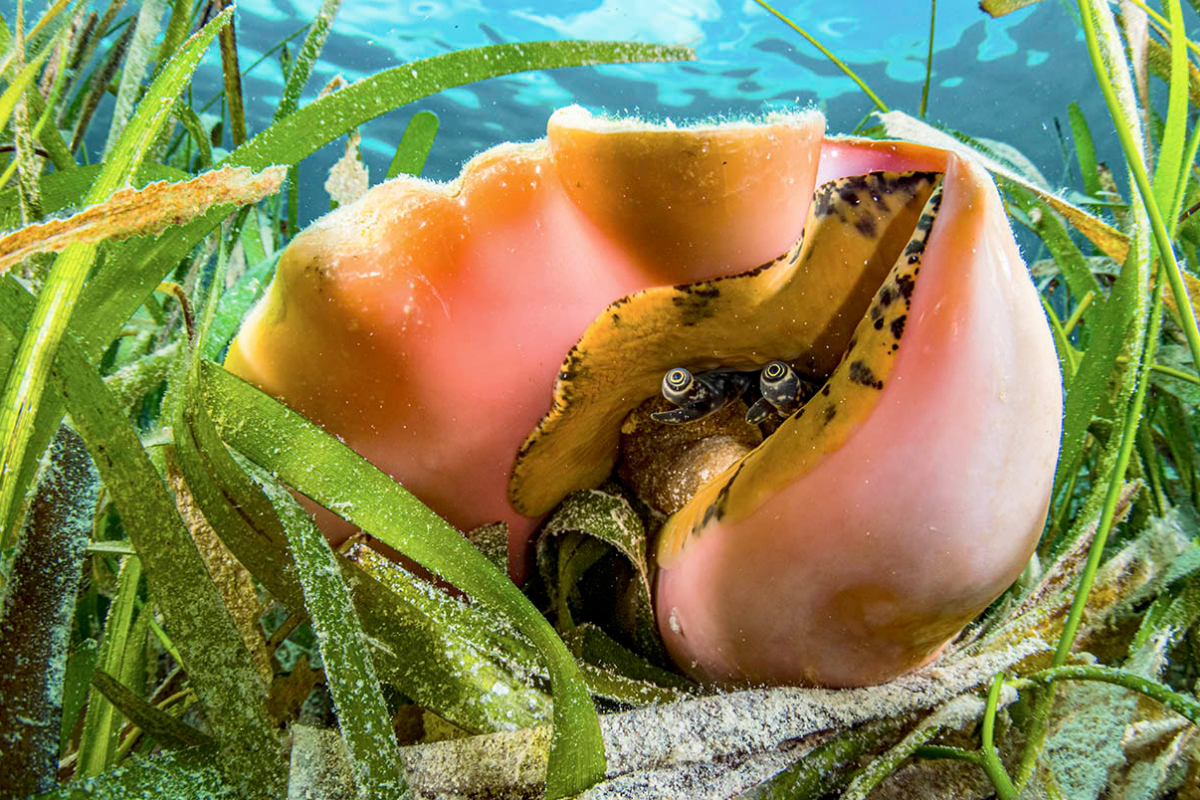Following Friends of Animals’ successful lawsuit with WildEarth Guardians—first initiated in 2012—the National Oceanic and Atmospheric Administration (NOAA) is finally listing the queen conch as threatened under the Endangered Species Act (ESA).
Issued on Feb. 14, 2024, and effective March 15, the final rule states that NOAA has determined that it is “likely” the queen conch will be in danger of extinction “within the foreseeable future.”
While Friends of Animals is relieved NOAA will finally be listing the queen conch, a large mollusk that occurs throughout the Caribbean Sea and Gulf of Mexico, under the ESA, we are concerned that NOAA did not simultaneously issue a critical habitat designation or 4(d) rule.
“Without the critical habitat designation, an ESA listing by itself is not sufficiently protective,” explained Jennifer Best, director of FoA’s Wildlife Law Program.
The 4(d) rule would include specific regulations that would apply to the queen conch as a threatened species, and could include restrictions or prohibitions on the import and export to and from the United States.
Growing up to five pounds, the queen conch is prized for its distinctive flared spiral shell with blunt spikes and pearly pink or orange interior, as well as its meat. Conch is most heavily and unsustainably fished in territorial waters around Puerto Rico and the U.S. Virgin Islands, which are under a mix of territorial and federal oversight.
The long-overdue listing—which reverses a 2014 finding—means that federal agencies must ensure that activities they carry out, fund, or authorize are not likely to jeopardize the continued existence of the species.
Nearly all of queen conch exports from Caribbean waters go to the U.S. Once abundant in Florida waters, the queen conch population in the Florida Keys crashed in the 1970s due to overexploitation and has never recovered. In 2018, the U.S. imported $33 million worth of conch meat for fritters, chowder and other dishes.
WildEarth Guardians submitted a petition to list the queen conch on March 1, 2012, based on the threats to the species from pollution, habitat degradation and human consumption. Though the National Marine Fisheries Service (NMFS) initially found the petition had merit, in 2014 it ultimately decided not to list the conch based on a deeply flawed analysis, which ignored the advice of the agency’s own experts. The finding failed to recognize the continuing impacts of heavy human exploitation and the fact that 85 percent of conch populations may already be too small to successfully reproduce.
In July 2016, Friends of Animals joined WildEarth Guardians in suing NMFS over the agency’s refusal to protect the queen conch under the Endangered Species Act.
Protection under the ESA is an effective safety net for imperiled species. Listing species with global distributions can protect them from trade and help focus U.S. resources toward enforcement of international regulations and recovery of the species.
“Given the pressures the queen conch faces throughout its range, we think that an Endangered, rather than Threatened, finding was warranted,” FoA’s Best stated, adding “We are reviewing the Threatened finding and plan to submit a Freedom of Information Act request to get more information about why these federal agencies are dragging their feet in giving the queen conch all the protections they need and deserve.”

